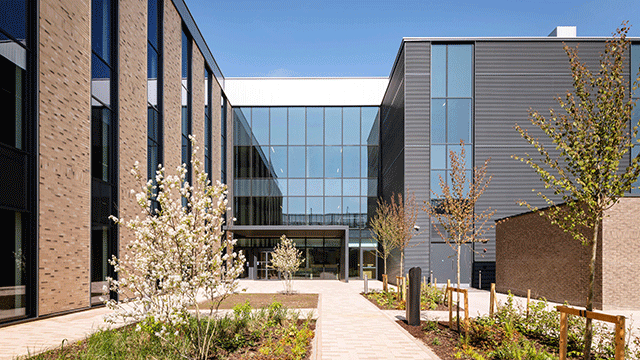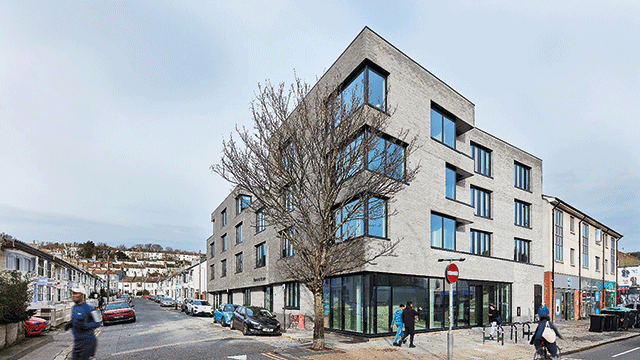With stalling rents, an uncertain future and worries over retailer desertion, at first glance Cardiff’s prime pitch Queen Street hardly makes a compelling investment case – even before concerns over a cooling UK investor market hit.
The autumn 2009 opening of Land Securities’ and Capital Shopping Centre’s 1m sq ft St David’s 2 mall looms. It will be situated to the rear of the existing St David’s Shopping Centre, which fronts Queen Street.
So far, only Debenhams and John Lewis have signed for a total of 270,000 sq ft. Its owners have two years to let the remaining 730,000 sq ft.
With few lettings at SD2, the potential knock-on effects on Queen Street remain unclear. Investors seem equally hesitant. Just a handful of deals have been completed recently. With capital growth cooling across the UK, and shaky prospects for rental increases, is buying on Queen Street still a sound investment?
Traditionally, shops on the street have proved valuable assets. The city’s tight but lucrative pitch consistently hits the top-10 UK retail rankings, and local spend is around £7bn.
Thanks to investment yields of 4% and even slightly below, shops remain South Wales’ highest value asset class. Moderate but steady rental growth on Queen Street, from £290 per sq ft zone A to £300 per sq ft this year, has stoked the market, but further growth is unlikely in the next two years.
While SD2 will be successful come 2009, says Anthony Phillips, head of Atisreal’s Cardiff office, “there will be a stalling of rents on Queen Street”. He adds: “Queen Street provides standard high street shops, and I can’t see too many retailers moving.”
Agents have continually raised concerns over the amount of space about to come on to the market.
LandSec’s project director Simon Armstrong is diplomatic about his scheme’s effect. “We want to create the Bond Street of Wales, with new retailers brought into Cardiff,” he says. “There will inevitably be some movement. People will aim to upsize, and others will take second units in the scheme.”
The worst-case scenario would be if SD2 struggled to attract upmarket occupiers from outside the city.
If the scheme targets the city’s existing occupiers, there is a danger that the stronger covenant retailers from Queen Street will be tempted to take space, firmly shifting the city’s prime to within the mall.
Agents are on the defensive. “Some investors will wonder if they should buy on Queen Street now, while 730,000 sq ft is being launched,” says Phillips. “But Queen Street has done very well in the past two years, and I’m not sure SD2 has had any impact.”
A handful of Queen Street deals demonstrate some investor confidence. For example, a private Irish investor bought numbers79-85, let to Clinton Cards andWH Smith, from Arlington Property Investors for £27.5m at a 3.75% yield. And Scottish Widows sold its newly redeveloped Nationwide Building Society shop at numbers 47-49 to Legal & General for £14.8m at a net initial yield of 4%.
So why would an institutional investor such as L&G buy into the market now? “In a national context, the city has a very large shopping population,” says a company spokesperson. “This is endorsed by reports of greater than average numbers of retailers with outstanding requirements. We expect to see further growth.”
Peter Graham, director with local agent Stephenson & Alexander, argues that the market is not quieter than usual, and says that the only dampening factor is the general instability in the wider investment market.
“The expectation is that if interest rates increase again, Cardiff’s investment yields will come out by a quarter of a percentage point, before they eventually readjust,” he says. “Investors are sitting on the fence because they are worried that yields will soften further.”
The short-term test of the sector will be demand for the HSBC shop on Queen Street, which is being marketed by CB Richard Ellis Investors for £8.9m at a 4.5% yield. Local agents will be hoping to see plenty of bids in order to prove that Queen Street’s future is secure.
Newport
In terms of growth potential, Newport must surely be on investors’ radar. Cardiff’s neighbour is finally getting its retail-led regeneration project a quarter of a century since the idea was proposed, and values in the town are already rising.
Regeneration company Newport Unlimited is orchestrating a £300m campaign to spruce up the town. It will include Modus’ 338,000 sq ft shopping centre, Friars Walk, due to be completed by 2009, and UBS Triton Property Fund’s £20m refurbishment of the 290,000 sq ft Kingsway Centre, due to be completed next January.
“If there were investment opportunities around in Newport, people would buy,” says Jonathan Miles, partner with Alder King. “Rents will move faster in percentage terms than in Cardiff or Swansea.”
Lack of stock means trading activity is slow, although Jonathan Phillips, with King Sturge, reports a recent deal in which NRB Properties purchased a shop from a private investor at a yield of 5.5%. As for prime yields, agents say 4.5% is the sharpest around, down from 4.75% in mid-2006.
But Graham says that investors hoping to benefit from the city’s predicted growth should have taken action three years ago. “Property in Newport could have been picked up at 7%,” he says.
Swansea
If Cardiff and Newport’s investment markets have proved cautious, Swansea’s has been just plain quiet. A distinct lack of available product has led to a dearth of investment deals over the last year. Prime yields have moved in slightly, in line with Newport, from 4.75% to 4.5% from June 2006 to June this year, although further compression is not expected.
Details of Swansea’s proposed regeneration are to be decided. Five developers have been shortlisted for the redevelopment of the St David’s/Quadrant development, which promises to revamp the Quadrant shopping centre and the 100,000 sq ft St David’s centre. A developer will be chosen by the end of the year.










